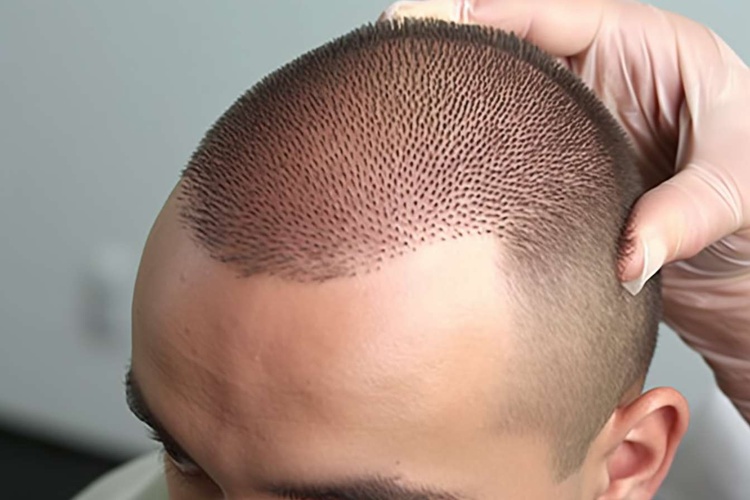Restore Your Confidence With Natural-Looking Hair Transplants
Hair loss can be a significant blow to one's self-esteem, affecting both men and women. Fortunately, modern hair transplantation techniques offer a solution that can help restore not just your hair, but your confidence as well. This article explores the world of hair transplants, from the latest technologies to costs and long-term results, providing you with the information you need to make an informed decision about this life-changing procedure.

What Are Hair Transplants and How Do They Work
Hair transplantation is a surgical procedure that involves moving hair follicles from areas of dense hair growth, typically the back or sides of the head, to areas experiencing hair loss or thinning. The donor area is chosen because these follicles are genetically resistant to the hormones that cause pattern baldness. During the procedure, individual follicular units containing one to four hairs are carefully extracted and transplanted to the recipient area. The transplanted hair continues to grow naturally since it retains its original genetic characteristics, providing permanent results that blend seamlessly with existing hair.
How Can Hair Transplants Boost Your Self-Confidence
The psychological impact of hair restoration extends far beyond physical appearance. Many patients report significant improvements in self-esteem, social interactions, and professional confidence following successful hair transplant procedures. Hair loss can affect how individuals perceive themselves and how they believe others view them, often leading to social withdrawal or reduced participation in activities they once enjoyed. Hair transplants can restore not only hairlines but also the confidence to engage fully in personal and professional relationships, wear preferred hairstyles, and feel comfortable in social situations without worrying about hair loss visibility.
What Are the Latest Advancements in Hair Transplant Technology
Recent technological developments have dramatically improved hair transplant outcomes and patient experiences. Robotic-assisted procedures now offer enhanced precision in follicle extraction and placement, reducing human error and improving graft survival rates. Advanced imaging systems help surgeons design more natural hairlines and optimize hair density distribution. Platelet-rich plasma therapy is increasingly used alongside transplants to promote faster healing and improved hair growth. Microsurgical techniques have also evolved, allowing for smaller incisions, reduced scarring, and faster recovery times. These innovations have made procedures less invasive while delivering more natural and aesthetically pleasing results.
How Much Do Hair Transplants Typically Cost
Hair transplant costs vary significantly based on several factors including geographic location, surgeon expertise, technique used, and the extent of hair loss being treated. The procedure is typically priced per graft, with each graft containing one to four hair follicles. Costs can range from $3 to $8 per graft, with most procedures requiring between 1,000 to 3,000 grafts depending on the treatment area size and desired density.
| Procedure Type | Provider Example | Cost Range |
|---|---|---|
| FUE Hair Transplant | Bosley Hair Restoration | $5,000 - $15,000 |
| FUT Hair Transplant | Hair Club | $4,000 - $12,000 |
| Robotic Hair Transplant | ARTAS Centers | $7,000 - $18,000 |
Prices, rates, or cost estimates mentioned in this article are based on the latest available information but may change over time. Independent research is advised before making financial decisions.
What Factors Influence the Longevity of Hair Transplant Results
Several key factors determine how long hair transplant results will last and their overall success. The quality of donor hair plays a crucial role, as stronger, healthier follicles tend to survive transplantation better and continue growing for longer periods. The surgeon’s skill and technique significantly impact graft survival rates and natural appearance. Post-operative care, including following medication regimens and protecting the scalp during healing, directly affects long-term outcomes. Individual factors such as age, overall health, hormonal balance, and genetic predisposition to hair loss also influence results. Additionally, lifestyle factors including stress management, nutrition, and avoiding harmful hair practices can help maintain transplanted hair health over time.
Hair transplantation represents a significant advancement in addressing hair loss concerns, offering individuals the opportunity to restore both their appearance and confidence. With continued technological improvements and refined surgical techniques, patients can expect increasingly natural results with minimal downtime. Understanding the process, costs, and factors affecting longevity helps individuals make informed decisions about whether hair transplantation aligns with their personal goals and expectations.
This article is for informational purposes only and should not be considered medical advice. Please consult a qualified healthcare professional for personalized guidance and treatment.




